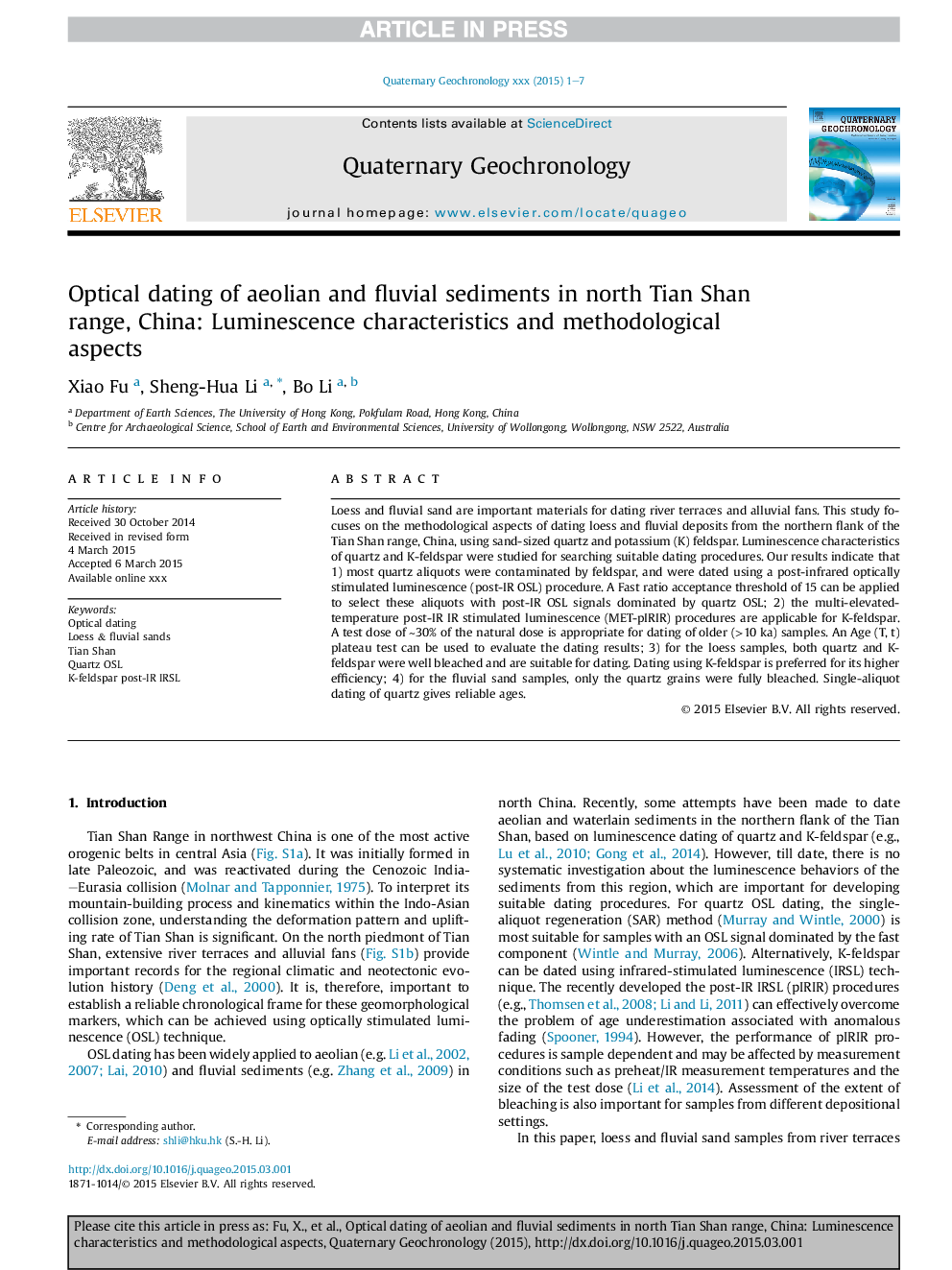| Article ID | Journal | Published Year | Pages | File Type |
|---|---|---|---|---|
| 6442533 | Quaternary Geochronology | 2015 | 7 Pages |
Abstract
Loess and fluvial sand are important materials for dating river terraces and alluvial fans. This study focuses on the methodological aspects of dating loess and fluvial deposits from the northern flank of the Tian Shan range, China, using sand-sized quartz and potassium (K) feldspar. Luminescence characteristics of quartz and K-feldspar were studied for searching suitable dating procedures. Our results indicate that 1) most quartz aliquots were contaminated by feldspar, and were dated using a post-infrared optically stimulated luminescence (post-IR OSL) procedure. A Fast ratio acceptance threshold of 15 can be applied to select these aliquots with post-IR OSL signals dominated by quartz OSL; 2) the multi-elevated-temperature post-IR IR stimulated luminescence (MET-pIRIR) procedures are applicable for K-feldspar. A test dose of â¼30% of the natural dose is appropriate for dating of older (>10Â ka) samples. An Age (T, t) plateau test can be used to evaluate the dating results; 3) for the loess samples, both quartz and K-feldspar were well bleached and are suitable for dating. Dating using K-feldspar is preferred for its higher efficiency; 4) for the fluvial sand samples, only the quartz grains were fully bleached. Single-aliquot dating of quartz gives reliable ages.
Keywords
Related Topics
Physical Sciences and Engineering
Earth and Planetary Sciences
Geochemistry and Petrology
Authors
Xiao Fu, Sheng-Hua Li, Bo Li,
